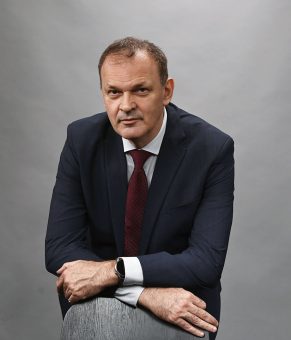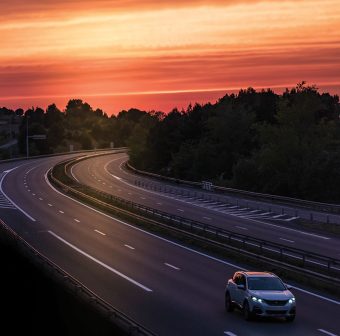
Electrification is one of the global goals because it is the only way to reduce emissions of harmful gases generated by traffic. Experts predict that, by the end of 2030, we will have seen an expansion of electric vehicles, which perfectly fits into the plan to achieve climate neutrality, which aims to reduce greenhouse gas emissions.
The automotive industry is turning around and is already investing in the mass production of electric vehicles, while internal combustion engines (IC engines) are slowly, albeit very slowly, leaving the production lines. The development of electromobility is also connected with the development of the charging network for electric vehicles. Unlike gas stations, which are well distributed, there are still not enough places to charge electric cars. That is why we need to work on the development of charging infrastructure, and this is where the most is expected from the Government, the line ministry and public companies. We spoke with Miroslav Alempić, Assistant Minister for Road Transport, Roads, and Traffic Safety, about developing electromobility, an electric charger network and novelties prescribed by the Law on Planning and Construction.
Q. The Law on Planning and Construction introduces the term “electromobility”. What novelty does this concept bring?
A. Electromobility is a new mobility concept that is one of the most efficient and environmentally friendly forms of transportation, especially if electricity is obtained from renewable energy sources. Electric-powered vehicles contribute to reducing greenhouse gas emissions and environmental pollution.
Electromobility aims to find a sustainable balance between people, vehicles and the environment. Solutions for the issues related to the Green Agenda occupy a particularly important place in the amendments to the Law on Planning and Construction. Namely, Serbia is a signatory to the Green Agenda Declaration, which, among other things, incorporates recommendations on reducing air, water and soil pollution.
Respecting the objectives of the Declaration, following its competencies, with the amendments and additions to the Law on Planning and Construction, the Ministry of Construction, Transport and Infrastructure facilitates the implementation of some of the recommendations stated in the Declaration, namely the development and promotion of electromobility, as an environmentally friendly mode of transport, through the development of the required infrastructure and the obligation to build it. First of all, it refers to the installation of electric chargers and the obligation that a certain number of electric chargers must be considered when constructing residential and business buildings, as well as petrol stations on motorways.
IN FOCUS:
- RENEWABLE SOURCES KEY TO ENERGY SECURITY
- ORIGINAL AND ECO-FRIENDLY SCENTS OF CITIES
- A STORY INSPIRED BY THE LOVE AND CARE OF CHILDREN
Q. When can we expect chargers for electric cars to be installed along the new roads, and at what will be their power?

A. In cooperation with the line ministry, public company Putevi Srbije intends to install electric chargers on existing and new motorway segments. Regarding the sections of first-A class roads under construction, such as the Moravian Corridor and Ruma-Šabac section, the plan is to install ultra-fast electric chargers, with a power of 175kW, at all major toll stations. The new chargers for electric cars will meet all the prescribed standards and be suitable for current and next-generation electric vehicles. Given that the amendment to the Law was passed, from now on, all new and old petrol stations on motorways are obliged to install their electric chargers.
Q. How many chargers for electric cars are there on Serbian roads?
A. We do not have a precise number of electric chargers in Serbia. The assumption is that there are about 100 of them and not more than 150 of different power, which is not enough, especially since there are not enough of them installed on motorways.
As part of the road modernization effort in our country, public company Putevi Srbije installed eight chargers for electric cars in the previous period, three of which are ultra-fast chargers with a power of 175kW, at strategically key points on the motorways, at the entrance to our country and toll stations Preševo, Šid, Dimitrovgrad and Subotica, as well as at the Belgrade toll station in the direction of Niš, on the plateau of the former Niš toll station (one in the direction of Belgrade, and the other in the direction of Niš).
Of course, apart from Putevi Srbije, petrol stations have also independently installed electric chargers. For example, OMV installed chargers for electric cars at the following stations Lapovo: Sever, Martinci 1, Doljevac, Gradina, Beška 1, Bačka Topola 1, Bubanj Potok, Novi Sad, Ruma, Kruševac and Vranje, including the strongest ones which power ranges from 150 to 180kW.

Q. Are electric car chargers going to be installed in the coming period, and what will be their capacity?
A. A plan is to improve the electric car charging network further. In addition to petrol stations, an increasing number of people are interested in setting up their networks of electric chargers, offering a variety of amenities for electric car owners. Public company Putevi Srbije plans to install an additional 10 electric chargers on the public roads it manages this year. The specified chargers will be of newer generation, with the possibility of upgrading.
The following locations have been preliminarily determined for the installation of new chargers:
- Čokot rest stop on the first A class state road No. 1, in the Niš-Preševo direction
- Lalinci rest stop on the first A class state road, in the Čačak-Belgrade direction
- Jerina rest stop on the first A class state road, in the Belgrade-Niš direction
- Toll station Šimanovci on the first A class state road, in the Belgrade-Šid direction
- Former toll station Sirig 1 on the first A class state road, Subotica-Belgrade road
- Toplik rest stop on the first A class state road, in the Niš-Dimitrovgrad direction
- Crvena Reka rest stop on the first A class state road, in the Dimitrovgrad-Niš direction
- Korbevac reststop on first A class state road, No. 1, in the Niš-Preševo direction
- Subotica toll station on the first A class state road, in the Subotica-Belgrade direction
- Šid toll station, on the first A class state road, in the Šid–Belgrade direction.
The charging service at the chargers installed by Putevi Srbije is currently free to contribute to the revival and development of electric vehicle transport in Serbia. Putevi Srbije now covers the cost of electricity used by those chargers, but when the relevant legal conditions are met, a charging fee will be introduced. We also expect more petrol stations and rest stops to be supplied with green energy, which will be achieved by investing in renewable energy sources through solar panels on rooftops, petrol station parking lots and rest stops.
For example, a solar power plant at a petrol station can produce from 50 to 100,000kWh of clean electricity every year and thus offset between 20 and 30 per cent of the facility’s total energy consumption.
Interviewed by: Milica Radičević
Read the story in the new issue of the Energy portal Magazine ELECTROMOBILITY



